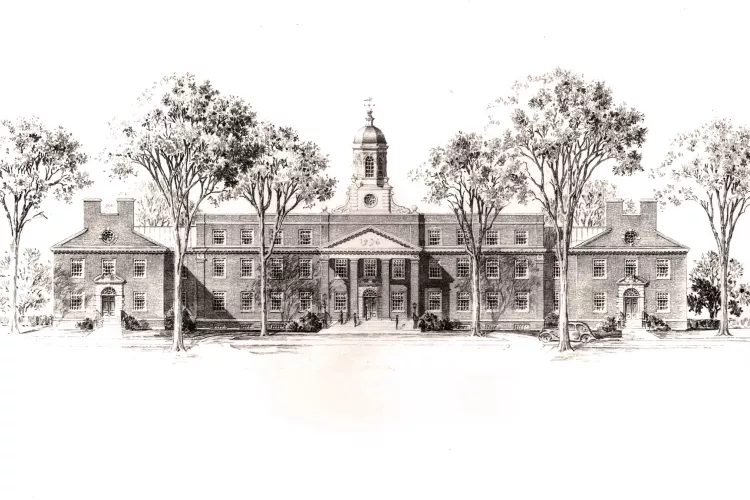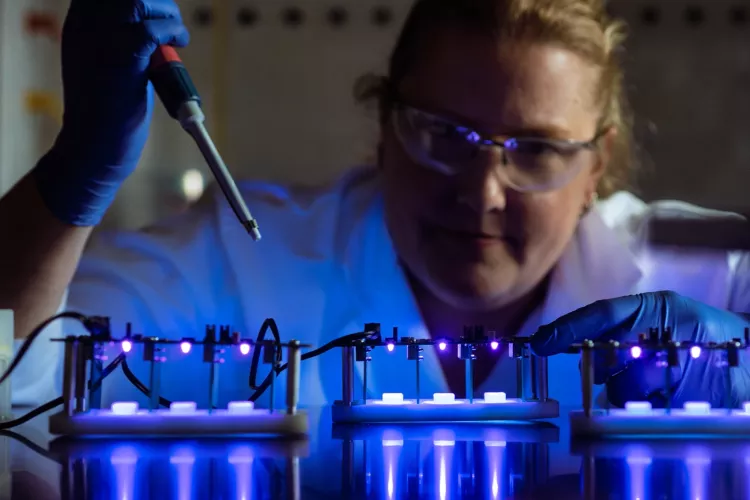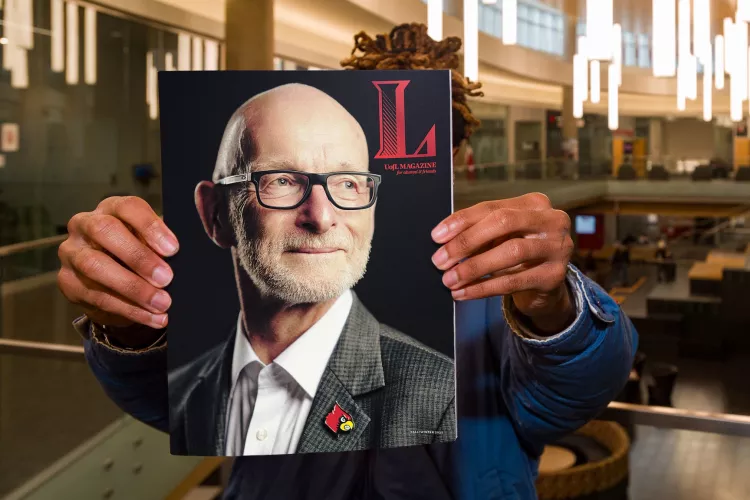UofL astrosurgery device tested in space aboard Virgin Galactic SpaceShipTwo
October 2, 2024An invention developed by UofL’s astrosurgery team made its first trip to space for testing in weightlessness as a payload aboard a suborbital space flight by Virgin Galactic.
The invention, a surgical fluid management system, flew aboard Virgin Galactic’s VSS Unity SpaceShipTwo from Spaceport America in New Mexico in May, prior to Sir Richard Branson’s Virgin Galactic space flight on July 11. The system is designed to make it possible for surgery to be conducted in a weightless environment and would be used on long-term space missions, such as on a lunar station or on deep-space missions such as to Mars.
The astrosurgery team, led by George Pantalos, professor in the Department of Cardiovascular and Thoracic Surgery at the School of Medicine, and Tommy Roussel, assistant professor in the Department of Bioengineering at the J.B. Speed School of Engineering, has been working on the system for 10 years, a project that has involved 23 students so far.
The team previously tested the system on parabolic flights aboard jet aircraft, which provide roughly 20-second periods of weightlessness, but the Virgin Galactic flight allowed the system to be evaluated for the first time under the more strenuous conditions of space and encompassing a few minutes of weightlessness.
The system consists of a dome-like structure that is affixed to a surgical site to control bodily fluids that otherwise would float away in the weightlessness of space. It also includes a multifunction device that can be used for suction, irrigation, lighting, vision and other surgical tasks.
[caption id="attachment_54182" align="alignleft" width="300"] Glovebox containing the surgical fluid management systems in flight aboard Virgin Galactic’s VSS Unity SpaceShipTwo[/caption]
A glovebox designed by the team specifically for in-flight testing was mounted inside the Virgin Galactic spacecraft, VSS Unity, for the flight. In addition to the UofL-designed system, it also included a surgical fluid management system developed by collaborators at Cornell University. The experiments were automated entirely, with no communication between the team and the spacecraft during the flight. Components of the system were activated in response to timing and input from sensors within the glovebox.
“Embedded microcontrollers detected when microgravity – less than 0.05 Gs – had been reached and then initiated the test protocol,” Roussel said. “We only had one chance to get it right.”
The protocol included turning pumps on and off to increase or decrease pressure inside the containment dome to control bleeding, injecting simulated blood into the dome, testing the multifunction device’s suction, irrigation and light capabilities and finally, emptying the containment dome. (See video of the tests performed during the flight)
Every element of the test sequence was a success.
[caption id="attachment_54183" align="alignleft" width="300"] Virgin Galactic’s VSS Unity in space over New Mexico[/caption]
“It did all the functions it was instructed to do during the microgravity period,” Pantalos said. “There was a little bit of variation in how things worked compared to gravity on earth, but they weren’t showstoppers by any means. The whole system worked in the way it was expected to in zero gravity.”
The results set the stage for the next suborbital flight, which the team hopes will include sending a researcher into space along with the system.
“This flight brought work on the surgical fluid management system to the point where it is ready for an investigator to fly on a suborbital space flight such as the Virgin Galactic flight to perform additional tests, hopefully in the near future,” Pantalos said.
The human-tended research experience was evaluated in person during the Virgin Galactic test flight and more tended research missions are due to take place soon.
The development and the test flights for the surgical fluid management system were funded by the NASA Flight Opportunities Program, which rapidly demonstrates promising technologies for space exploration, discovery and the expansion of space commerce through suborbital testing with industry flight providers. Each of the flight tests serves as a steppingstone in the development process, placing the technologies in relevant environments to improve their function and test feasibility while reducing the costs and technical risks of future missions.
Earlier in May, the team also conducted experiments aboard a series of three research flights with ZERO–G, a privately owned company that uses a modified Boeing 727 jet to create a weightless environment using parabolic flight patterns. One of those flights involved rehydrating a volume of freeze-dried red blood cells for a project led by UofL biology professor Michael Menze. The other two flights involved tests of a more advanced version of the surgical fluid management system that flew aboard SpaceShipTwo. This was the fifth parabolic flight campaign for the team, each involving at least two flights – each including 30 parabolas and their accompanying weightlessness – with investigators aboard to conduct tests during the flights.
In addition to the surgical fluid management system, the astrosurgery team is developing other technology to allow surgical procedures in space, training protocols that would allow non-surgeons to conduct emergency surgery, using robots to assist in those surgeries and 3D printing of recyclable surgical instruments onboard the craft to save space and materials.
The work with Menze and assistant professor of bioengineering Jonathan Kopechek to develop methods for long-term blood preservation using dehydration previously was highlighted in UofL News.
[caption id="attachment_54184" align="aligncenter" width="640"] UofL astrosurgery team members George Pantalos, bioengineering student Sienna Shacklette, bioengineering student Clara Jones and Tommy Roussel in front of the Virgin Galactic VSS Unity SpaceShipTwo at Spaceport America in New Mexico.[/caption]
Betty Coffman is a communications coordinator focused on research and innovation at UofL. A UofL alumna and Louisville native, she served as a writer and editor for local and national publications and as an account services coordinator and copywriter for marketing and design firms prior to joining UofL’s Office of Communications and Marketing.



